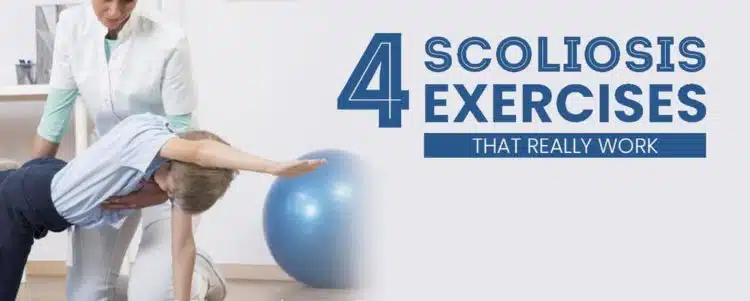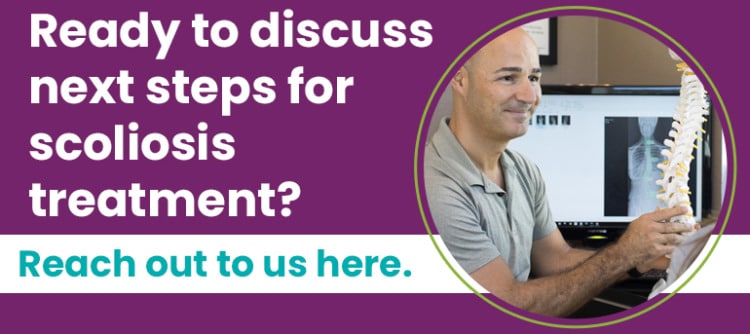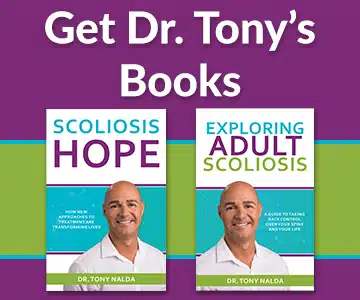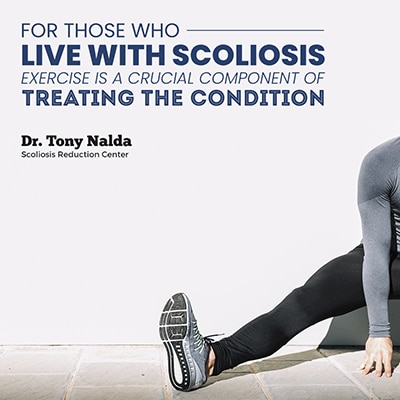
If you ask the average person about scoliosis exercises, they might respond with a confused look. To most people, scoliosis is seen as a limiting condition that prevents patients from participating in physical activities. They may see scoliosis patients as fragile individuals who must be kept away from activities like exercise or sports.
For those who live with scoliosis, however, exercise is a crucial component of treating the condition.
Participating in sports and other forms of exercise helps patients — especially adolescents with adolescent idiopathic scoliosis — develop well-being in a variety of aspects of life. It helps them realize that life does not have to be limited by their diagnosis. All you have to do is take a look at the accomplishments of Usain Bolt to realize that physical activity can have a remarkably positive impact.
Furthermore, exercise and participation in sports aids in treatment by increasing strength, flexibility, and overall health. Many parents come to me assuming that I will recommend for their child to stop playing sports and are surprised when I encourage them to continue their participation. Staying active and engaging in exercise makes the whole body healthier, which in turn leads to more positive outcomes for scoliosis treatment
For individuals dealing with dextroscoliosis and the associated discomfort, there are effective scoliosis exercises that can help alleviate symptoms, including neck pain, and improve spinal alignment, regardless of the degree of scoliosis they may have.
Understanding Scoliosis
Scoliosis is a medical condition characterized by an abnormal curvature of the spine. It can affect individuals of all ages, but it is most commonly diagnosed in adolescents and young adults. The causes of scoliosis are varied and can include genetic factors, uneven pelvic positioning, past spinal or joint surgeries, knee or foot distortions, or even head injuries. The condition can range from mild to severe, with symptoms and visibility varying accordingly.
In cases of mild scoliosis, the spine may have a curvature of less than 20 degrees, often making it difficult to detect without a medical examination. Moderate scoliosis is identified by a spine curvature between 20 and 40 degrees, which may start to show visible signs such as uneven shoulders or hips. Severe scoliosis, defined by a spine curvature of 40 degrees or more, can lead to more pronounced symptoms, including significant back pain, noticeable asymmetry in the body, and even difficulty breathing due to the impact on the thoracic cavity.
Understanding the degree of scoliosis is crucial for determining the appropriate treatment and management strategies. Whether dealing with moderate scoliosis or severe scoliosis, early detection and intervention can significantly improve outcomes and help maintain a better quality of life.
Sports and Scoliosis
I want to get into some specific scoliosis exercises that can benefit patients, but first I’d like to address participation in sports, especially for adolescents with scoliosis.
Personally, participation in sports has been one of the most gratifying aspects of my life. When I was younger, sports taught me a lot about my own body, and they helped guide me down the path that led me to where I am today. Sports provide a great way for adolescents to express themselves, build relationships, achieve goals and learn the value of a commitment to fitness.
But not all sports are appropriate for those with scoliosis.
Swimming is often recommended as the best sport to participate in for those with scoliosis. The water simulates a weightless environment, which places less impact on the spine and can improve the health of the spinal discs. It also utilizes a wide range of the body’s muscles, providing a highly balanced form of activity. For those with thoracic scoliosis, swimming can be particularly beneficial in improving core strength and respiratory function.
Running and walking are also great for scoliosis patients, as is hiking. Sprinting (Usain Bolt’s specialty) is probably better for the spine than long-distance running. Cross-country skiing is also a wonderful physical activity for adolescents with scoliosis.
Collision sports do not need to be prohibited entirely, but they should be approached with caution. Football, hockey, soccer, gymnastics and other similar sports are more likely to cause injury to the spine or possibly reduce the effectiveness of a treatment plan. Adolescents with scoliosis should probably avoid these types of sports if they want the best-possible outcomes from treatment. They should also steer clear of sports that involve the use of one side of the body more than the other (such as golf, bowling or tennis).
Repetitive shocks are characteristic of some sports like weight lifting, long-distance running, the long jump or horseback riding. Therefore, they may increase compressive forces applied to the spine, and should be approached with caution.
Scoliosis-Specific Physical Therapy Exercises
Patients who come here to the Scoliosis Reduction Center® receive treatment in a few key categories, one of which is Scoliosis Specific Exercise. Scoliosis Specific Exercises — SSEs — are customized for each patient based on the individual’s ability and curve type, particularly for those with idiopathic scoliosis. They involve reflexive exercises, movement-based exercise and isometric exercises. These could potentially help fix scoliosis or at least reduce most of it without the patient needing surgery.
Understanding the scoliosis do’s and don’ts is crucial for managing the condition effectively, but it’s important to note that while exercise can help improve scoliosissymptoms and posture, it may not always be the sole treatment method for scoliosis.
Each patient is evaluated and given a set of exercises designed specifically for them. Additionally, they are given a specific program involving therapy, chiropractic care and bracing. When all aspects are combined, it creates a powerful approach to treatment that delivers real, measurable improvements.
4 Scoliosis Exercises that Can Benefit Core Muscles
Now I want to tell you about a few scoliosis exercises that can be performed by most patients to good effect.
First, it is important to know that you should not begin any sort of exercise or physical fitness program without consulting your doctor or trusted medical professional. Because every patient is different, it is critical that each individual approaches physical therapy exercises in a manner consistent with their unique abilities and spinal curvature.
These 4 scoliosis exercises that really work can help manage various spinal conditions, including spinal stenosis, hyperlordosis and a bulging disc in the neck, by improving flexibility and strengthening the muscles supporting the spine. Additionally, exercises targeting the lumbar spine can be particularly beneficial for improving posture and managing scoliosis symptoms.
That being said, here are some of the best exercises for those with scoliosis.
#1 — Stretching
Stretches that can be done in a symmetrical manner can relieve tension and tightness in the muscles. Some examples include the “child’s pose,” chest and shoulders stretches, and hip flexion stretches.
If you are curious about yoga and scoliosis, I covered it in a separate article, which you can read.
#2 — Rowing
Rowing works and strengthens the latissimus dorsi back muscles, and there are many ways to do it. You can sit on a stability ball while facing a pulley machine, or use rowing-specific equipment.
#3 — The Plank
Planking is a deceptively simple way to strengthen the body’s core and improve strength. You can begin by placing your forearms and knees on the ground, with your elbows beneath your shoulders. Hold the position for as long as you feel comfortable. If you feel ready for a bigger challenge, lift your knees off the floor and stabilize yourself with your toes. When you plank properly, you will feel it in your lower abdominal muscles and your lower back. Using proper technique is crucial to avoid injury and maximize the benefits of the exercise. If you feel any pinching or pain, adjust your body or stop performing the exercise until you can receive the proper guidance.
#4 — CLEAR Institute Back Exercises
As a CLEAR (Chiropractic, Leadership, Educational, Advancement and Research) certified doctor, I stand behind the recommendations of the organization and would like to point you to its comprehensive list of back exercises. These exercises can be performed in almost any setting, and they can provide increased strength and relief when done properly.
Schroth Exercises for Scoliosis
Schroth exercises are a specialized form of physical therapy designed specifically for individuals with scoliosis. These exercises are asymmetric, meaning they are tailored to address the unique curvature of each patient’s spine. The primary goals of Schroth exercises are to improve posture, reduce pain, and enhance the strength and endurance of the core muscles, including the abdominal and back muscles.
A typical Schroth exercise routine involves a combination of breathing techniques, stretching, and strengthening exercises. These exercises are often performed in a specific sequence to maximize their effectiveness. For instance, deep breaths are used to help expand the rib cage and improve lung function, while targeted stretches and strength-building movements work to correct posture and support the spine.
Schroth exercises can be performed at home as part of a home exercise program or in a clinical setting under the guidance of a physical therapist. They are often used in conjunction with other scoliosis treatments, such as bracing or, in more severe cases, surgery. By incorporating Schroth exercises into their daily routine, individuals with scoliosis can work towards a more balanced and aligned spine, ultimately improving their overall quality of life.
Additional Tips for Scoliosis Management
In addition to incorporating Schroth exercises into their routine, individuals with scoliosis can benefit from several other management strategies to help maintain a healthy spine and improve their quality of life:
- Maintain Good Posture: Practicing good posture can significantly reduce strain on the muscles and ligaments in the back, promoting better spinal health. Whether sitting, standing, or walking, being mindful of maintaining a straight and aligned posture is crucial.
- Engage in Regular Exercise: Regular physical activity helps strengthen the muscles that support the spine, improving overall strength and endurance. Activities like swimming, walking, and low-impact aerobics are excellent choices for individuals with scoliosis.
- Use Proper Lifting Techniques: When lifting heavy objects, it’s essential to use proper techniques to avoid putting unnecessary strain on the back. Bend at the knees, keep the back straight, and lift with the legs to protect the spine.
- Take Regular Breaks: Prolonged periods of sitting or standing can lead to muscle fatigue and discomfort. Taking regular breaks to stretch and move around can help alleviate tension and promote better spinal health.
- Consider Physical Therapy: Working with a physical therapist can provide personalized guidance on exercises and techniques to strengthen the muscles supporting the spine. Physical therapy can also help improve posture and reduce pain.
- Consult with a Physical Therapist: A physical therapist can develop a customized exercise program tailored to the individual’s specific needs and goals. This personalized approach ensures that the exercises are safe and effective, helping to manage scoliosis more effectively.
By following these tips and incorporating Schroth exercises into their daily routine, individuals with scoliosis can take proactive steps to manage their condition and enhance their overall quality of life. Regular consultation with healthcare professionals, including physical therapists, is essential to ensure that the exercise program is appropriate and effective for their specific needs.
Learn More about Scoliosis Exercises
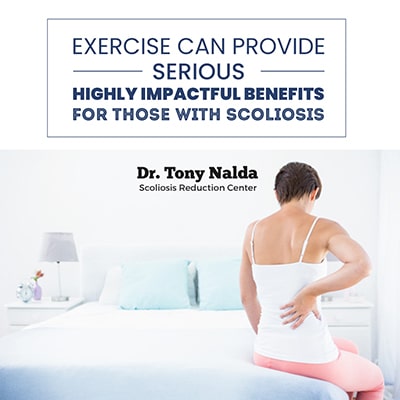
For individuals dealing with scoliosis, it’s essential to know that there are scoliosis exercises that can genuinely help in managing the condition. These exercises for mild scoliosis often focus on strengthening the muscles that support the spine and incorporating scoliosis spine stretches to improve flexibility.
However, it’s equally important to be aware of scoliosis exercises to avoid, as some movements may exacerbate the condition. Consulting with a healthcare professional, such as a physical therapist, can provide personalized guidance on effective exercises and a safe, structured approach to managing scoliosis through targeted physical therapy.
Exercise can provide serious, highly impactful benefits for those with scoliosis, but patients and parents need to approach exercise thoughtfully. No exercise program should be approached without first consulting a doctor, and any exercise that causes pain or discomfort should be ceased and re evaluated before continuing.
If you are interested in learning more about how exercise can help scoliosis patients as part of a comprehensive treatment program, or if you’d like to learn more about the types of exercises that are appropriate for scoliosis, I’d love to hear from you! Contact us here at Scoliosis Reduction Center®.
